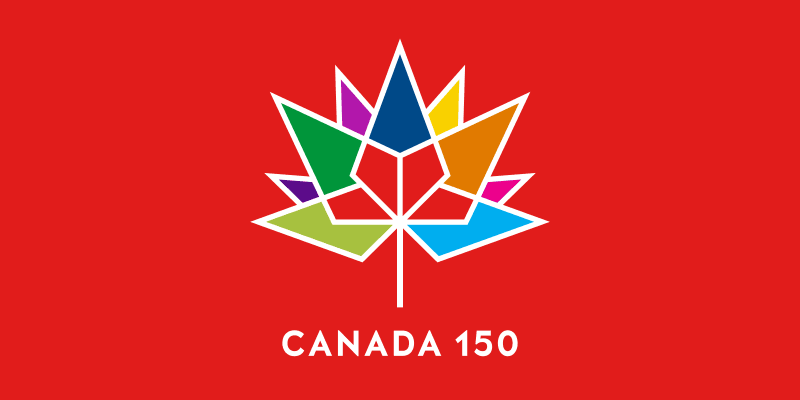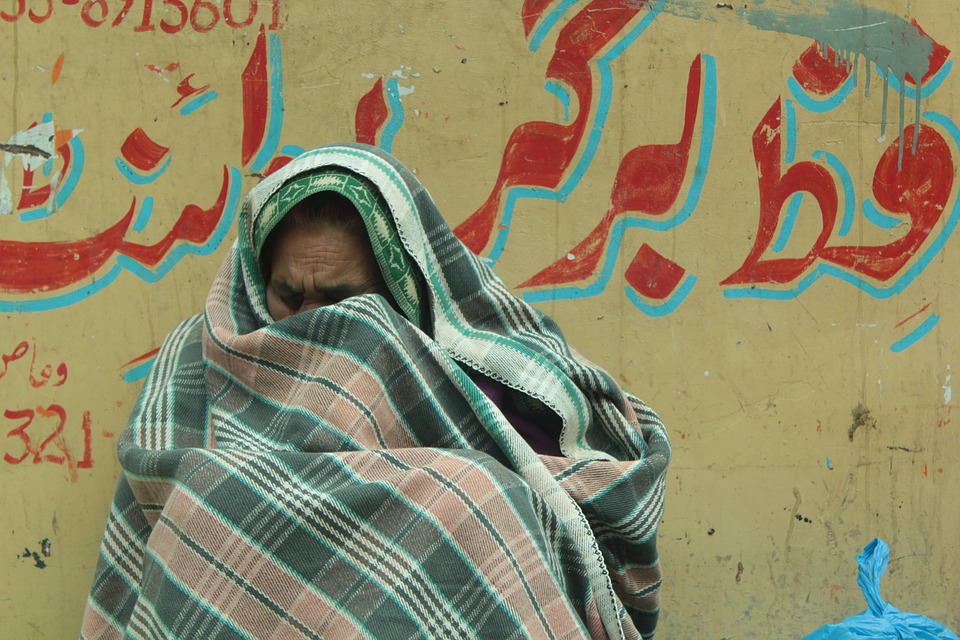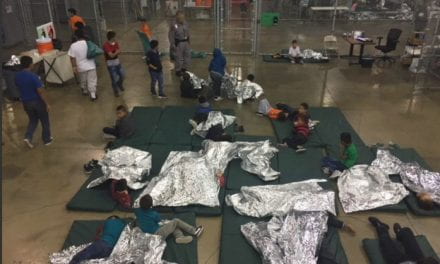By: Mackenzie Rice*
July 1st marked Canada’s sesquicentennial anniversary of the British North America Act, which united Canada’s first four provinces into one nation. To celebrate this landmark anniversary, the Canadian provincial and federal governments planned a host of special events that ranged from proud and symbolic to downright hilarious. An example of the latter was the purchase of a six-story tall inflatable yellow duck that was set to float around the Toronto waterfront to symbolize that Canada is part of a “global bathtub”.[1] The duck, which cost a total of $200,000 was lamented in the most Canadian way possible; with complaints that the money should have instead been used for increasing the number of alternative care beds in Ontario hospitals.[2]
Nevertheless, one of the most symbolic features of Canada’s celebration is the segmented, colorful maple leaf that was designed as the country’s 150th year anniversary logo as a representation of Canada’s first four provinces and the diversity that has grown from the nation’s roots. The maple leaf is the most iconic Canadian symbol, and this year’s design highlights the diverse backgrounds, races, belief systems, cultures, and identities that come together to form Canada’s national community. In fact, the 150th Canada Day celebrations include recognition of many different parts of Canadian history and heritage, such as National Aboriginal Day on June 21st and Canadian Multiculturalism Day on June 27th.[3] This proud celebration of diversity and inclusion for Canada’s 150th anniversary comes at a time when those very values are under threat in many of Canada’s fellow Western democracies, particularly in regard to immigration policy. With the nation’s celebration of its 150th anniversary year turning out to be an expression of patriotism through diversity rather than nationalism, one might wonder how Canada has remained nearly immune to xenophobia in recent years.
Recent election campaigns in the United States, France, and Germany have seen the rise of isolationist political platforms calling for tighter restrictions on immigration policies and limitations on refugee programs, justified in the name of counter-terrorism, national security, and economic strain. Meanwhile, Canada’s very accommodating immigration system has become championed by liberals around the globe who oppose the recent push for reducing net migration. Last year, Canada granted permanent resident status to over 320,000 new immigrants, setting a national record high.[4] Canada’s immigration policy also produces high favorability in public opinion and exceptional results in terms of social integration of immigrant populations. For example, a 2015 survey found that 82% of Canadians believe that immigration has a positive impact on the national economy.[5] Furthermore, over half of Canadians responded that multiculturalism is a “very important” symbol of Canadian identity, valuing it well above the importance of hockey to the national identity.[6] In another survey in 2015, 95% of Canadians agreed with the statement that people born abroad are “every bit as likely to be a good citizen as someone born in the country”, reflecting a 6 percentage point increase since the survey was conducted in 2011; a remarkable finding considering the increasing threat of international terrorism.[7] Immigrant populations in Canada are also exceedingly successful. Canada is home to one of the most educated immigrant populations in the world and has the greatest level of equality when comparing employment rates between domestic and foreign born populations among OECD countries.[8],[9]
These positive indicators of immigrant integration and success in Canadian society are largely rooted in Canada’s long-standing points-based system that is at the heart of the nation’s immigration policy. Canada is a country with positively-selected migration because of its points system, which admits immigrants on purely economic basis; by evaluating an individual’s candidacy for immigration based on age, education, job skills, and language ability while excluding factors such as race, religion, and ethnicity.[10] Therefore, immigrants entering Canada have been selected based on factors that indicate their likely prospects for success in the Canadian workforce. In addition, selecting immigrants that are likely to succeed and contribute positively to the economy mitigates any public concern that immigrants will put stress on the welfare state, thereby reducing pre-conceived barriers to acceptance of immigrant populations.[11] While this points-based system is often cited as a policy that other Western democracies should emulate, it is unfortunately quite inapplicable to other countries due to geographical factors that remain entirely out of their control.
Geography has served Canadians well; Canada lucked out and got arguably the best piece of real estate on this small blue and green planet. Canada’s lands are rich in natural assets, including natural resources such as oil and freshwater and two large coastlines. The only neighbor to share a land border with Canada is a country that has not fought a war on its soil in 152 years, has the world’s largest economy, and is home to people that love their country so much that most wouldn’t dare leave it to start a new life north of the border. Due to its location, undocumented migration in Canada is a much less salient issue than in other countries with geographical proximity to common countries of origin.[12] For decades, due to blind geographical luck, Canada has been afforded the liberty of choosing its immigrant population, and has had the time to craft policies that work to its advantage. So much cannot be said for many of the European countries that are currently trying find policy responses that will securely and fairly navigate the migration crisis they face, or for the United States, which is struggling to find a policy solution to manage the influx of undocumented immigrants that travel across its southern border with Mexico. These countries do not have the time or the ability to develop a points-based immigration system like Canada’s, as they are faced with hundreds, sometimes thousands of poor, hungry, desperate people who cross their borders every day in search of a better life and a safer home. Regardless of the degree to which other Western democratic societies adopt principles of cultural integration; implementing a replica of Canada’s points-based immigration system would not necessarily be successful due to geographic and contextual differences.
This is not to discredit Canada’s truly unique values of acceptance and diversity that are evident in the way that Canadians express patriotism. A study published by the Canadian Journal of Political Science found that Canadians who express higher levels of patriotism are more likely to support increased immigration. By contrast, higher levels of patriotism in the United States are found to be associated with anti-immigrant sentiments. [13] The Migration Policy Institute attempts to explain this phenomenon by examining Canada’s search for a national identity in the 1960s and 1970s that would set it apart from Britain and the United States, yet accommodate Quebec’s separatist movement.[14] The result was a public and government investment in multiculturalism that acknowledged Quebecois nationalism and aimed to differentiate the Canadian identity from the ideals of British homogeneity. Further, in an effort to set itself apart from the concept of the American “melting pot”, the Canadian government and public education system adopted domestic policies that promoted multicultural integration rather than civic assimilation.[15] Serving as Canada’s Prime Minister from 1968-1984, Pierre Elliott Trudeau played a prominent role in this unique era of identity-building. During his time in office, he famously proclaimed, “There is no such thing as a model or ideal Canadian. What could be more absurd than the concept of an “all-Canadian” boy or girl? A society which emphasizes uniformity is one which creates intolerance and hate.”[16] This concept of identity has persisted in Canadian society during the decades since. Continuing his father’s legacy, in 2015, current Prime Minister Justin Trudeau declared Canada the first post-national state; defined not by a national mainstream, but rather by a pan-cultural collection of identities from across the world.[17] Canada’s creation of a national identity founded in diversity in combination with its geographical fortunes has laid the foundation for the development of an immigration system that yields positive results unlike any other.
Being a Canadian myself, I am proud of my country and its commitment to principles of inclusion and diversity. I am proud that my uber-progressive liberal government created a campaign called #WelcolmeRefugees in the wake of the Syrian refugee crisis and resettled over 25,000 refugees in the 4 months between November 2015 and February 2016 while pledging to continue the trend.[18] I am proud that when immigrants come to my country they feel safe and become successful. But I am also aware that we, as Canadians, have never chanted “build the wall” because history has never put us in a time or place where we would feel the need to. Instead, Canada has been afforded the luxury of constructing its own national identity and immigration system that works to incorporate diverse populations into the fabric of the Canadian society and economy very effectively. Canada has undeniable strengths when it comes to managing immigration. These strengths are rooted in careful policy construction, an instilled belief that diversity is part of the Canadian identity, and sheer geographical luck. As a result, I believe it is important for Canadians to take time during this 150th anniversary year to reflect on the principles of diversity and inclusion that we strive to represent, and to ensure that Canadian leaders use our nation’s fortunes of stability and prosperity to develop policy responses to the great issues of our time that will continue to embrace values of global citizenship over isolationism.
[1] The Toronto Sun, “Ontario to kick off 150th birthday celebration with giant inflatable duck costing $200Gs,” May 29, 2017, accessed July 6, 2017, http://www.torontosun.com/2017/05/29/ontario-to-kick-off-150th-birthday-celebration-with-giant-inflatable-duck-costing-200gs.
[2] Ibid.
[3]Government of Canada, “Celebrate Canada,” June 29, 2017, accessed July 6, 2017. http://canada.pch.gc.ca/eng/1468262573081.
[4] Jonathan Tepperman, “Canada’s Ruthlessly Smart Immigration Policy,” The New York Times, June 28, 2017, accessed July 6, 2017. https://www.nytimes.com/2017/06/28/opinion/canada-immigration-policy-trump.html?mcubz=0.
[5] The Environics Institute for Survey Research, “Focus Canada- Spring 2015,” June 30, 2015, accessed July 6, 2017, http://www.environicsinstitute.org/uploads/institute-projects/environics%20institute%20-%20focus%20canada%20spring%202015%20survey%20on%20immigration-multiculturalism%20-%20final%20report%20-%20june%2030-2015.pdf.
[6] Ibid.
[7] Michael Adams and Keith Neuman, “Keeping Faith on Immigration,” The Globe and Mail, July 7, 2015, accessed July 6, 2017, https://www.theglobeandmail.com/opinion/keeping-faith-on-immigration/article25328301/.
[8] Jonathan Tepperman, “Canada’s Ruthlessly Smart Immigration Policy.” The New York Times, June 28, 2017, accessed July 6, 2017, https://www.nytimes.com/2017/06/28/opinion/canada-immigration-policy-trump.html?mcubz=0.
[9] Government of Canada, “Trends in economic performance of immigrants in Canada,” September 18, 2012, accessed July 6, 2017, http://www.cic.gc.ca/english/resources/research/2012-migrant/sec05.asp.
[10] Jonathan Tepperman, “Canada’s Ruthlessly Smart Immigration Policy,” The New York Times, June 28, 2017, accessed July 6, 2017, https://www.nytimes.com/2017/06/28/opinion/canada-immigration-policy-trump.html?mcubz=0.
[11] Irene Bloemraad, “Understanding Canadian Exceptionalism in Immigration and Pluralism Policy,” Migration Policy Institute, July 2012, http://www.migrationpolicy.org/research/TCM-canadian-exceptionalism.
[12] Ibid, 5.
[13] Ibid, 7.
[14] Ibid, 9.
[15] Ibid, 9.
[16] Pierre Elliott Trudeau, “Remarks at the Ukrainian-Canadian Congress” (1971), in The Essential Trudeau, ed. Ron Graham (Toronto, ON: McClelland & Stewart, 1998).
[17] Guy Lawson, “Trudeau’s Canada, Again,” The New York Times Magazine, December 8, 2015, accessed July 12, 2017, https://www.nytimes.com/2015/12/13/magazine/trudeaus-canada-again.html?mcubz=0.
[18] Government of Canada, “#WelcomeRefugees: Key Figures,” February 9, 2017, accessed July 6, 2017, http://www.cic.gc.ca/english/refugees/welcome/milestones.asp.
*Disclaimer: The content contained in the following material is the sole ownership of the author and does not reflect the views of the Towson University Journal of International Affairs nor Towson University in any respect whatsoever.








Hey There,
Your substance is very valuable and encouraged me a ton to showcase my recently dispatched site. Much obliged to you such a huge amount for your direction.